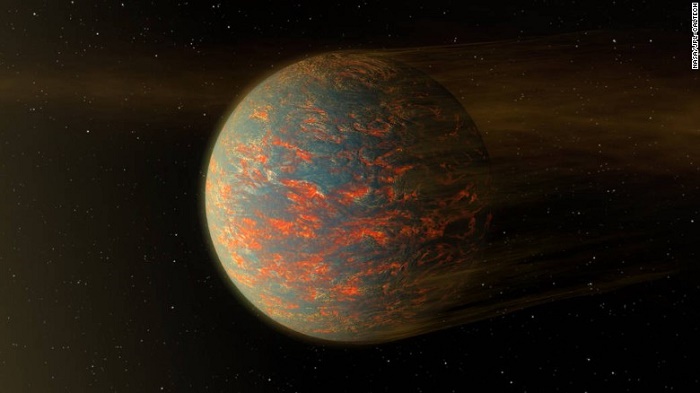"The latest findings tell us the planet has hot nights and significantly hotter days," Brice Olivier Demory, an astrophysicist at the University of Cambridge said.
The exoplanet (a planet outside Earth`s solar system) is so close to its star that it orbits once every 18 hours. One side of the planet -- the day side -- is always facing the star.
The map shows the day side is about 4,400 degrees Fahrenheit, and the night side is 2,060 degrees Fahrenheit -- a difference of about 2,340 degrees.
"This indicates the planet inefficiently transports heat around the planet," Demory said in a NASA release. "We propose this could be explained by an atmosphere that would exist only on the day side of the planet, or by lava flows at the planet surface."
Hot lava, hard lava
NASA said the data suggests the planet doesn`t have a massive atmosphere. The lava flows on the night side, NASA added, might harden without transporting heat.
"The day side could possibly have rivers of lava and big pools of extremely hot magma, but we think the night side would have solidified lava flows like those found in Hawaii," said Michael Gillon, an exoplanet investigator from the University of Liege in Belgium, said.
The data is due to engineers and scientists using new and novel calibration methods that enhances the ability to measure changes in the brightness of exoplanets.
Not all scientists are in agreement about the data from the Spitzer Telescope.
Nicolas Cowan, an astronomer at McGill University in Montreal, told Scientific American: "Spitzer performs better than advertised, but we routinely push it orders of magnitude beyond spec."
Super-Earths are up to 10 times more massive than our Earth but lighter than gas giants such as Neptune, NASA says. They can be made of gas, rock or a combination of both. Some scientists believe super-Earths have a better chance of being habitable than planets closer to the size of Earth.
55 Cancri e, discovered in 2004, is about twice as large as Earth and eight times its mass.
Spitzer was launched in August 2003 and is 139,142,149 miles from Earth.
The James Webb Space Telescope is scheduled to launch in October 2018 and scientists hope it will be able to reveal even more about 55 Cancri e`s composition.
More about:
















































